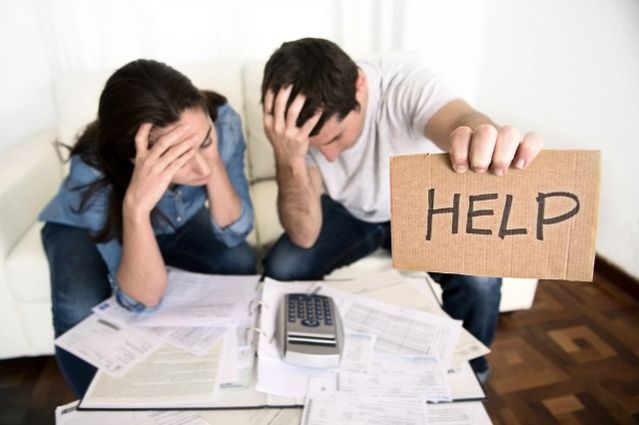Depression
Land of the Free and Depressed
A look at the cost of depression in America
Posted March 21, 2016

America, the land with the freedom to pursue happiness, isn’t exactly happy. Americans are stressed, burned out and depressed. Americans spend more time at work and less time on vacation compared to most other Western countries, which may contribute to the tremendous depression statistics. There is no surprise that depression affects approximately 15 million American adults, or about 6.7 percent of the U.S. population 18 years of age and older on a yearly basis. In the country where we measure our success by the things we own as opposed to our relationships with people who matter, happiness studies have proven that Americans are more dissatisfied with their lives than many other societies around the world.
The World Happiness Report used by the United Nations, reveals that the United States, one of the economically wealthiest countries in the world, comes in at No. 15 on the Ranking of Happiness. With statistics such as these, it is no surprise that the cost of depression from a financial standpoint is now a major burden on the U.S. The cost of depression is not only measured from a monetary standpoint, but can be measured by social and emotional hardships as well.
The diagnosis
The famous mnemonic SIGECAPS is what we were taught in medical school to easily remember all of the diagnostic signs and symptoms for depression. Five out of 8 of these symptoms must be present for a duration of at least two weeks for a diagnosis of depression:
problems with Sleep
loss of Interest
feelings of Guilt
lack of Energy
loss in Concentration
change in Appetite
Psychomotor agitation
Suicidal ideation
Of course, many would argue that with only a minimum of a two-week duration, often depression is situational and can present in patients due to a breakup, financial hardship, a physical illness or the loss of a loved one. Regardless of whether depression is situational or a major disorder, it is costing the U.S. a tremendous amount of money.
The numbers
According to an article in the Journal of Clinical Psychiatry, in the United States, depression is “a leading cause of disability for people aged 15-44 years, resulting in almost 400 million disability days per year, substantially more than most other physical and mental conditions. The economic burden of depression, including major depressive disorder (MDD), bipolar disorder, and dysthymia, was estimated at $83.1 billion in 2000 in the United States. This total was composed of $26.1 billion in direct medical costs, $5.4 billion in suicide-related mortality costs, and $51.5 billion in indirect workplace costs.”
This economic burden is continuing to rise as the most recent study in the Journal of Clinical Psychiatry revealed that annual costs related to major depressive disorder rose to $210.5 billion in 2010. This dramatic increase demonstrates that we as a society are failing at treating this disease. From missed days of work leading to loss of productivity, to the earnings made by the pharmaceutical and insurance companies, mental illness is now a costly business.
This should not be surprising as we Americans are hooked on pharmaceutical drugs. Patients walk into their doctor’s office with a virus yet demand antibiotics, and we as physicians are so overly concerned with our patient satisfaction ratings that we hand out these prescriptions. We are guilty of overprescribing for everything: chronic pain, anxiety, viral sinusitis, and the list goes on.
Antidepressants are extremely profitable for the pharmaceutical companies, yet incredibly harmful on the U.S. economy. Yes, studies have proven that antidepressants as well as psychotherapy are extremely efficacious in treating depression, but this does not change the fact that these medications are burning holes in our wallets.
The drug prices
More than 30 million Americans are currently on antidepressants. The U.S. accounts for approximately 5 percent of the global population, but buys more than 50 percent of the pharmaceutical drugs. Antidepressants such as SSRIs and SNRIs cost an average out-of-pocket expense of $15 in 2010 for Americans who were covered by insurance. Of course, with inflation this price has risen since 2010.
Retail prices (the cost without insurance coverage) for commonly prescribed antidepressants range from approximately $20 a month to more than $1,000 a month depending on the specific antidepressant, dosage, pill form (tablet or capsule) and whether it is available in generic or brand name. For example, a 10 milligram capsule of fluoxetine (generic Prozac) costs $28 a month, whereas a 10 milligram tablet of escitalopram (generic Lexapro) at retail cost is $87 a month.
The social factors
We see that economic hardship results from depression, but financial disasters are not the only loss. Depression results in emotional and social burdens as well.
Depression can result in relationship hardships and divorce, drug and alcohol addiction, self-harm and suicide, eating disorders and even physical abuse. All of these horrible effects cost our society even more financial hardship in their own individual entity. Drug and alcohol treatment can cost thousands of dollars out of pocket each month, divorce proceedings and lawyers are not cheap and funeral costs are not free, not mention the emotional harm that occurs due to a broken family or the loss of a loved one.
Self-medicating for depression by using a line of cocaine, a couple shots of whiskey or a few painkillers may initially take the emotional pain away for a very short time, but once that substance leaves your system, the depressive feelings come back and often hit harder than ever, and may even spiral into an addiction.
According to studies, the divorce rate is as much as nine times higher in couples with a partner who struggles with untreated depression. Mental health professionals know that those living with a clinically depressed individual are at greater risk of becoming depressed themselves. Depression impacts anyone close to the depressed person.
The solution?
So is there a solution to these economic and social hardships caused by depression? If there is, we as Americans have yet to discover it. Recognizing depression is just as important as learning key tips in attaining happiness.
The science of happiness is another topic to be discussed, but has shown great potential in individuals who are miserable and on the border of depression. Non-pharmacological therapies have proven to be efficacious in treating depression. Light therapy, acupuncture, yoga, meditation and exercise can help cultivate happiness, but these therapies also cost money.
Why we are depressed is pertinent to the costs of depression and our general, declining health. Perhaps it is how we as Americans live that results in such high rates of depression. Culturally, Americans are set up to become depressed because of unrealistic expectations. What if we worked and lived in a society where we were allowed more vacation and time off to spend with our families, were not constantly inundated with materialistic items and did not have to take out a loan for higher education or to pay off our medical bills? If we lived more like the Scandinavian societies, I imagine that depression rates would plummet and, as a result, the cost would drastically lower, as these nations are considered to be ranked the highest on the happiness scale.
Contributed by Kristen Fuller, M.D.




